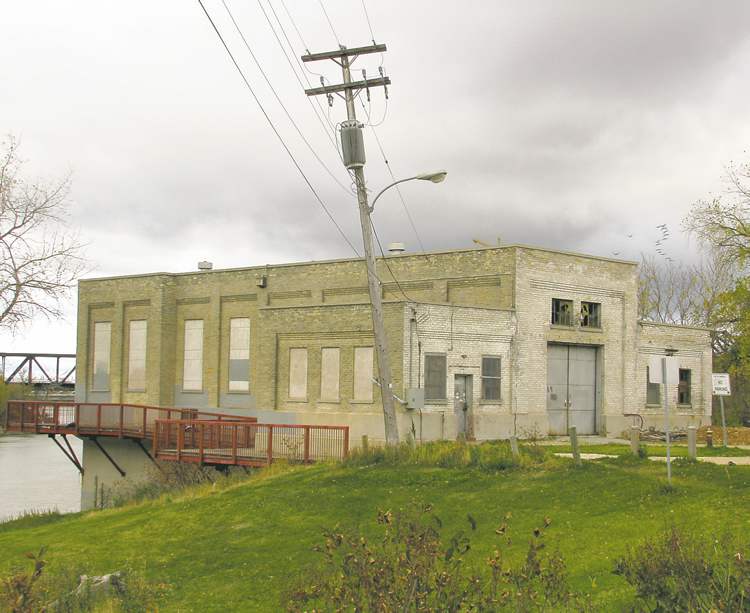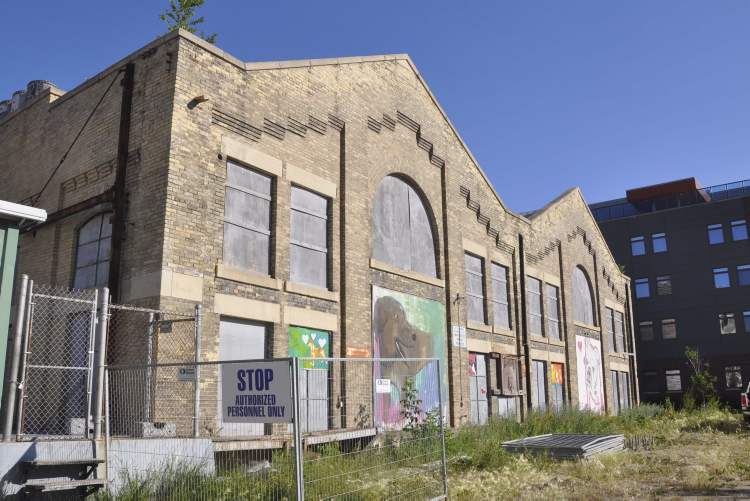Pumping station still feeling the pressure
BLOG OF THE WEEK: WINNIPEG DOWNTOWN PLACES
Advertisement
Read this article for free:
or
Already have an account? Log in here »
To continue reading, please subscribe:
Monthly Digital Subscription
$0 for the first 4 weeks*
- Enjoy unlimited reading on winnipegfreepress.com
- Read the E-Edition, our digital replica newspaper
- Access News Break, our award-winning app
- Play interactive puzzles
*No charge for 4 weeks then price increases to the regular rate of $19.00 plus GST every four weeks. Offer available to new and qualified returning subscribers only. Cancel any time.
Monthly Digital Subscription
$4.75/week*
- Enjoy unlimited reading on winnipegfreepress.com
- Read the E-Edition, our digital replica newspaper
- Access News Break, our award-winning app
- Play interactive puzzles
*Billed as $19 plus GST every four weeks. Cancel any time.
To continue reading, please subscribe:
Add Free Press access to your Brandon Sun subscription for only an additional
$1 for the first 4 weeks*
*Your next subscription payment will increase by $1.00 and you will be charged $16.99 plus GST for four weeks. After four weeks, your payment will increase to $23.99 plus GST every four weeks.
Read unlimited articles for free today:
or
Already have an account? Log in here »
Hey there, time traveller!
This article was published 22/07/2012 (4894 days ago), so information in it may no longer be current.
PRIOR to 1919, Winnipeg’s water system was made up of a series of wells and low-pressure pumping stations, such as the McPhillips Street Station, that distributed it around the city.
For fire suppression, there was a network of hundreds of fire hydrants but they were fed with the same pressure as household taps. It was up to fire wagons of the day to provide the necessary pressure. Some large buildings constructed after 1900, such as Eaton’s and the Kemp Manufacturing Building, included their own water reservoirs and pump systems.
Newspapers often reported about large, devastating fires that razed entire blocks in other cities. Winnipeg had its own close call in 1904 when the Bullman Block at Bannatyne Avenue and Albert Street caught fire. It destroyed the Bullman Block, Ashdown’s store and the upper stories of the Duffin and Baker (Birt Saddlery) Block before firefighters got it under control.

If it had continued a few doors north, it would have burned the newly opened Union Bank Tower, Winnipeg’s first skyscraper.
Due to low water pressure during the fire, water had to be pumped into the system directly from the Assiniboine River. The result was the contamination of the drinking water supply and the worsening of an ongoing typhoid epidemic. In 1904, there were double the number of cases compared to the year before and 133 deaths.
The city needed a high-pressure water system to fight fires. The Board of Trade passed a resolution in December 1904 calling on the city to provide one for the downtown commercial district and agreed to pay 40 per cent of the bill. The resolution received a warm reception at city hall, which was no surprise given that the council was made up of local businessmen.
It was up to city engineer Henry Ruttan to find the system that would work best for Winnipeg. He looked to places such as Philadelphia, which had just put into service North America’s newest and finest fire-suppression system. Ruttan’s system wouldn’t impact Winnipeg’s drinking-water supply in any way. Water would be drawn from the Red River through a pumphouse into a pumping station that contained four, 540-horsepower Otto engines by Crossley Brothers of Manchester, England. These engines were powered from an on-site, coal-fired generating station.
The engines would be on standby and manned 24 hours a day, seven days a week. When a call came from the fire department, the system’s network of 12 kilometres of high-pressure water mains and 78 hydrants would be ready to deliver between 200 and 300 pounds per square inch of pressure — enough to send a stream of water up to 200 metres in the air.
The James Avenue site was chosen for its access to the Red River and rail lines for the coal supply. The construction contracts were let in late summer 1906.
On Oct. 24, 1907 the first test of the system took place. Others followed in the days to come and the system was ready for service.
Aside from the conversion from river water to Shoal Lake water and coal-powered generators to electric, the system continued to operate until Oct. 10, 1986, when it was taken out of service. The intake building along the river was longtime home to the harbourmaster but the pumping station remained empty.

Through the late 1980s and 1990s, the most mentioned reuse was as part of a science and technology museum, though it appears nobody floated an actual plan to open a museum. In the late 1990s a deal to turn it into a brew pub with a museum component fell through.
In 2001, CentreVenture sold it to Peter Ginakes and Bob Harris for $150,000. In 2004, the city bought it back for $750,000 but found one of the Crossley engines had been removed without permission and gifted to the Austin’s Threshermen’s museum for a “substantial” tax receipt. Another large pump was also missing but the two would not divulge where it went.
Though there has been a recent flurry of media stories about the building, there is still no plan for its reuse.
Follow this blog at http://winnipegdowntownplaces.blogspot.ca/

Our newsroom depends on a growing audience of readers to power our journalism. If you are not a paid reader, please consider becoming a subscriber.
Our newsroom depends on its audience of readers to power our journalism. Thank you for your support.


